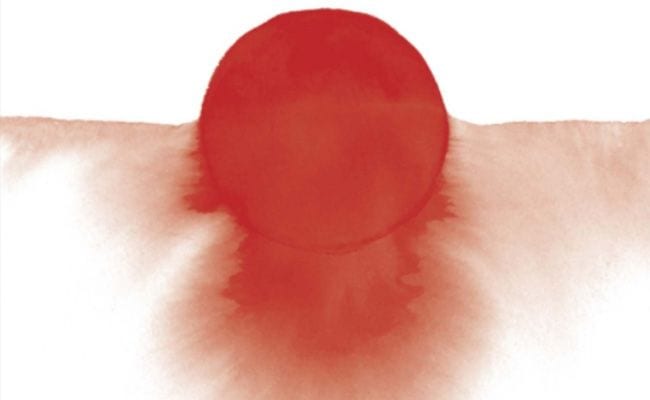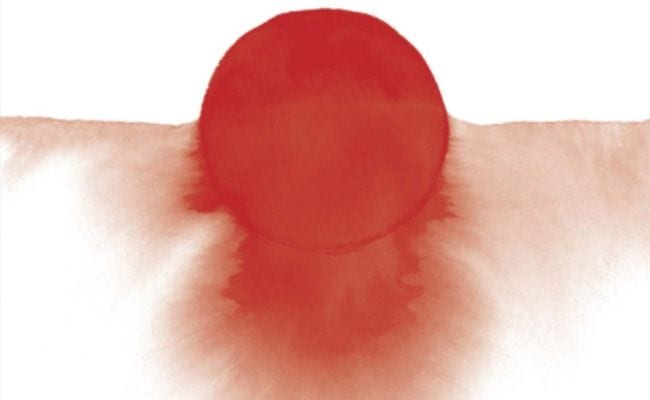
Kikuchi-san was fated to survive the tsunami that struck northeastern Japan on 11 March 2011. “Retreating water took me back out and another wave carried me in again.” The story he tells Gretel Ehrlich is less of a narrative than a series of dream-like impressions: “I was stranded in the debris. I couldn’t go anywhere. It was so quiet, I heard a dog whimpering somewhere, but couldn’t see it. It was so sad.”
Kikuchi-san’s is the first of the many engrossing testimonies Ehrlich began collecting just three months after the tsunami. Like so many of the survival stories in Facing the Wave, Kikuchi-san’s is also a tale of death. He tried to save his father, who had climbed a seawall ladder and was clinging to it as the wave approached, but “his father shook his head, refusing to budge. One last look, then the young fisherman jumped off the wall. When he turned back, his father was gone”.
What is it about survivor’s stories that we find so compelling? The supposed triumph of the human spirit? The will to survive? These are platitudes, something made abundantly clear during the course of the book. One might admire the Japanese people for their stoicism, but the survivors of the tsunami are not made stronger by what did not kill them. As one elderly woman says, “Now we are poor. We have nothing. I really don’t want to live anymore. Really, the truth is, I would like to put an end to my life soon.”
Indeed, many of the survivors do exactly that. “Older couples from Fukushima Prefecture are taking the train to Yamagata… but once there, commit suicide because they can’t stand to be away from their old neighborhoods.” At the Ookawa Elementary School, the tsunami killed ten of 11 teachers and 74 children. Apparently, the faculty debated which way to go for 20 minutes in the school parking lot. Too long. Those few who survived climbed a hill behind the school. The lone teacher to survive later committed suicide.
In the aftermath of the tsunami, a Japanese blogger writes: “There have been more suicides. It’s irresponsible to say ganbatte–‘do your best.’ If anything, it has the opposite effect.”
Aristotle begins The Metaphysics with the claim that human beings are driven by a desire for knowledge, and to my mind this is a much more reasonable explanation for why people do things such as, say, slow down at the scene of a car accident. The more cynical and facile assumption is that people enjoy witnessing others in pain; instead, for Aristotle, we need to know, to understand, and we cling to that knowledge for survival.
Psychologists tell us that putting a traumatic event into narrative form helps victims to gain ownership of the experience, giving them control where there was none, and helping them to overcome the helplessness associated with the trauma. And this is what requires so much work on the part of both the analyst and the analysand.
This is perhaps the payoff for readers of books like Facing the Wave, as well. The testimony of survivors helps us not only to vicariously face the devastation and heartache, but also to have a sense of control over it, however naïve this belief may be.
Trauma is imbued with painful lessons, and Facing the Wave is at its most moving and profound when Ehrlich removes herself from the text and simply reports what she sees and hears. This is precisely what she does when her driver, Abyss-san, ruminates on his experience: “Down by the ruined port he tries to find the spot where his former house once stood, but he can’t figure it out. Except for warehouses, there are no buildings left at all, as if the world had been taken back to a blank slate. ‘If there are no clues, no reference points, how can I know where I am, if I exist?’ he asks.”
Later, Ehrlich writes: “the tsunami teaches us to ‘un-ask’ the usual questions: Why me? Why these losses, this suffering? People here don’t make an enemy of sorrow. They know that pain is real; that neurotic suffering is only the flapping of the ego.” Facing the Wave is peppered with similar buddhist pronouncements, as well as with quotes from Basho and explications of Shinto beliefs. Normally, this would be clearly recognizable as a technique the author adopts to give the reader a sense of time, place and culture, but here it sometimes becomes uncomfortable, as if Ehrlich were using the tsunami as a springboard for testing her own convictions.
Ehrlich seems bent on getting as close to the traumatic epicenter of the disaster as she can; yet, despite her best efforts, she remains detached. This is perhaps what allows her to see it through a more philosophical lens. For the victims, however, the tsunami seems to stir more emotion than reflection. At times, one wonders if some of her interviewees are trying to remind her of this fact.
“What would you do if you went home and everything was gone?” one man asks her. “The taxi brings you to your address but there is no house. Your dogs are dead, your horses, and your husband. You find their bodies far away. Your car is crushed. Your library destroyed–all the books strewn, and your work, your notes, and papers. Everything in your world has vanished. You have no money, no job, and no hope of finding one. That’s how it is for thousands of people here. Please don’t forget that feeling.”
Too often, especially in the first half of the book, Ehrlich’s presence is overwhelming. “Some days I too feel stricken: I can’t go back to the coast, I tell myself; I can’t look any more. No, that’s wrong. I can’t stoplooking.” And more than once, confusingly, she shifts to the first person plural: “Japan’s air has been corrupted. We breathe it in. We eat produce grown in sandy, radiation-swallowing dirt. We carry the dead and the broken inside our bodies; we carry ghosts and hydrogen explosions; we take them with us; we take them home.” Is Ehrlich reporting the experience or reveling in it? After all, she will go back home; unlike the tsunami victims, she has a home to go back to.
Perplexingly, the ghosts Ehrlich speaks of in the passage above are not metaphorical. Shintoists believe in ghosts, and so does Ehrlich. Trying to console a young woman haunted by her dead ancestors, Ehrlich asks her: “Do ghosts need to be scary? Shouldn’t we, instead, try to make them feel at home? I tell her about the ghost at the Wyoming ranch where I once lived, the sound of clomping up and down stairs at night, the shot glass of whiskey I left at the landing, and fruit and flowers.”
Elsewhere, she tells of her experience with a Japanese medium, or itako, who “went into a trance and told me things she couldn’t have known about my dead friend. After, we climbed the northeastern mountain of Osorezan to see where the itako go to speak to the dead…”
Ehrlich’s metaphysics might alienate some readers, and they distract from the otherwise poignant testimonies and moving encounters. Still, because of Ehrlich, and in spite of her, the survivors’ tales are heard. They refuse to be drowned out. Facing the Wave does not manage to achieve what John Hersey did in Hiroshima, but it is nonetheless powerful, informative, disturbing and inspiring.


![Call for Papers: All Things Reconsidered [MUSIC] May-August 2024](https://www.popmatters.com/wp-content/uploads/2024/04/all-things-reconsidered-call-music-may-2024-720x380.jpg)



